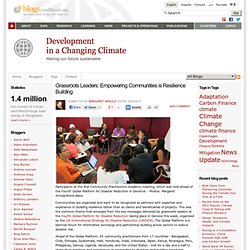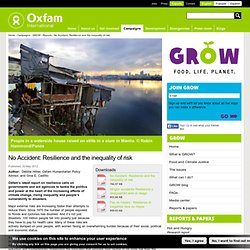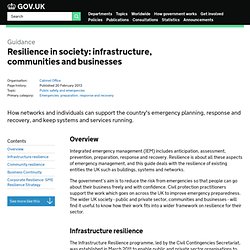

Empowering Communities is Resilience Building. Participants at the first Community Practitioners Academy meeting, which was held ahead of the Fourth Global Platform for Disaster Reduction in Generva. - Photos: Margaret Arnold/World Bank Communities are organized and want to be recognized as partners with expertise and experience in building resilience rather than as clients and beneficiaries of projects.

This was the common theme that emerged from the key messages delivered by grassroots leaders at the Fourth Global Platform for Disaster Reduction taking place in Geneva this week, organized by the UN International Strategy for Disaster Reduction (UNISDR). The Global Platform is a biennial forum for information exchange and partnership building across sectors to reduce disaster risk. Ichio Muto, a member of an organic farmers’ association in Japan, shared how the community responded to the Fukushima nuclear disaster following the 2011 earthquake, and how they are using organic farming methods to reduce the radiation level of crops. Resilience and inequality of risk. Published: 20 May 2013 Author: Debbie Hillier, Oxfam Humanitarian Policy Advisor, and Gina E.

Castillo Oxfam’s latest report on resilience calls on governments and aid agencies to tackle the politics and power at the heart of the increasing effects of climate change, rising inequality and people’s vulnerability to disasters. Major external risks are increasing faster than attempts to reduce them. A new international emphasis on building resilience offers real promise to allow the poorest women and men to cope with, and ultimately thrive, in the face of shocks, stresses, and uncertainty. Engaging-with-communities. Microsoft Word - Community Resilience and Coproduction SCDC briefing paper.doc - Community Resilience and Coproduction SCDC briefing paper.pdf. Building resilience in rural communities: toolkit. Exploring Community Resilience.
Resilience in society: infrastructure, communities and businesses - Detailed guidance. Overview Integrated emergency management (IEM) includes anticipation, assessment, prevention, preparation, response and recovery.

Resilience is about all these aspects of emergency management, and this guide deals with the resilience of existing entities the UK such as buildings, systems and networks. The government’s aim is to reduce the risk from emergencies so that people can go about their business freely and with confidence. Civil protection practitioners support the work which goes on across the UK to improve emergency preparedness. The wider UK society - public and private sector, communities and businesses - will find it useful to know how their work fits into a wider framework on resilience for their sector.
Infrastructure resilience The guide Keeping the country running: natural hazards and infrastructure provides advice on: Sector resilience plans In 2010, sector resilience plans focused on the resilience of the UK’s critical national infrastructure to flooding. Background Training. Global welfare net? Understanding Community Resilience - Tsunami. Community Resilience and Coproduction SCDC briefing paper.doc. Community Resilience: a new form of Community Governance to deal with Climate Change. Abstract from a talk by Vandana Shiva and Jacqueline McGlade at the Gaia Foundation in June 2009.

Written by Stephen Frank. Dr Vandana Shiva is a world-renowned scientist and environmentalist. She is Director of Navdanya, India, which is dedicated to the rejuvenation of indigenous knowledge and culture. As part of its fight against bio-piracy, Navdanya has founded forty six seed banks across the country. It supports people's food rights in the face of globalisation and helps maintain awareness of the hazards of genetic engineering.
In the Himalayas, the snow is turning to rain because of global warming. Flowers that used to herald Spring in March or April are now blossoming in January. While climate change continues to create these vulnerabilities, dam-building as well as hydro-power generating activities have accelerated. Communities are the custodians. At the local level, communities with indigenous knowledge are in real contact with what is happening.